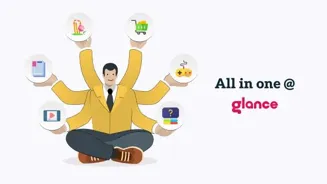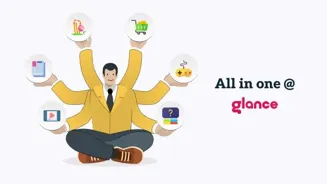Unlock the power of clear business communication in India. Tailor messages, embrace simplicity, listen actively, use visuals, choose mediums wisely, mind body language. Learn 10 effective tips for impactful
messaging. Read more for a communication transformation
In the bustling landscape of Indian businesses, where tradition meets modernity, effective communication is the bedrock of success.
Whether you're a seasoned entrepreneur or a budding professional, mastering the art of clear messaging can significantly impact your career trajectory and organizational growth.
In this article, we present ten actionable tips to hone your business communication skills and ensure your message resonates with your audience.
Know Your Audience: Tailor Your Message
Before you craft any communication, take a moment to understand who you're addressing. Are you speaking to potential investors, your team, or your customers? Each group has unique needs, expectations, and levels of understanding.
Tailoring your message to suit their specific requirements is paramount.
Consider their cultural background, technical expertise, and familiarity with your industry. Use language they understand, address their concerns directly, and frame your message in a way that resonates with their values.
For instance, when communicating with rural customers, using simple Hindi or the relevant regional language and relating your product or service to their daily lives can significantly improve comprehension and engagement.
Failing to know your audience in business communication can be like trying to sell winter coats in Chennai during summer. It just won't work! Understanding the nuances and expectations of your target audience is key to crafting messages that resonate and drive the desired results.
Take time to research your audience through surveys, market research, or even informal conversations to get a better understanding of their needs and preferences.
Embrace Simplicity: Avoid Jargon and Technical Terms
In today's fast-paced world, people appreciate clarity and conciseness. Avoid using jargon, technical terms, or overly complex language that might confuse your audience. Instead, opt for simple, straightforward language that everyone can understand.
Imagine explaining a complex new software feature to a marketing team unfamiliar with coding. Instead of bombarding them with technical specifications, break it down into easily digestible points highlighting how the feature can benefit their marketing campaigns.
Similarly, when communicating with international clients, be mindful of language barriers and cultural differences. Use clear, plain English and avoid idioms or slang that might be misinterpreted. By prioritizing simplicity and clarity, you can ensure your message is easily understood by all.
It is important not to sound presumptuous.
Active Listening: Hear to Understand, Not Just to Respond
Communication is a two-way street. Effective communication isn't just about speaking; it's also about listening actively. When someone is speaking, give them your undivided attention, ask clarifying questions, and summarize their points to ensure you understand them correctly.
Active listening demonstrates respect and builds trust, fostering stronger relationships. For instance, in a team meeting, instead of just waiting for your turn to speak, truly listen to your colleagues' ideas and offer constructive feedback.
This not only improves understanding but also encourages collaboration and innovation.
Moreover, active listening can help you identify hidden issues or concerns that might not be explicitly stated.
By paying close attention to both verbal and nonverbal cues, you can gain valuable insights and address potential problems before they escalate. Active listening will add true value to your business..
Use Visual Aids: Enhance Understanding and Engagement
Visual aids can be a powerful tool for enhancing understanding and engagement, especially when communicating complex information. Charts, graphs, images, and videos can help illustrate your points, making them more memorable and impactful.
For example, when presenting sales data to your team, a well-designed chart can quickly and effectively communicate trends and patterns that might be difficult to grasp from a spreadsheet alone.
Similarly, a short video showcasing a product demonstration can be far more engaging than a lengthy written description. Just be sure to choose visuals that are relevant, high-quality, and appropriate for your audience.
An irrelevant image of a bird soaring in the sky might be great but it doesn't add any value to what you are trying to say.
Choose the Right Medium: Match Message to Method
The way you communicate is just as important as what you communicate. Think carefully about the most appropriate medium for your message. Is it best delivered in person, over the phone, via email, or through a video conference?
For sensitive issues, a face-to-face conversation or a phone call might be more appropriate than an email. Use email as a powerful medium to communicate and communicate often. Regular, informal communication allows for greater comfort and honesty.
For routine updates or quick questions, instant messaging can be a convenient and efficient option. Consider the urgency of the message, the complexity of the information, and the recipient's preferences to choose the medium that will be most effective.
Using the right medium can truly turn the tide.
Be Mindful of Body Language: Nonverbal Communication Matters
Body language speaks volumes, often even more than words. Be aware of your own nonverbal cues and how they might be interpreted by others. Maintain eye contact, smile, and use open and welcoming postures to convey confidence and approachability.
Avoid crossing your arms, fidgeting, or looking away, as these behaviors can signal disinterest, defensiveness, or even dishonesty. Also, pay attention to the body language of others to gauge their reactions and adjust your communication accordingly.
For instance, if you notice someone is frowning or looking confused, take a moment to clarify your message or address their concerns.
In India, cultural norms regarding body language can vary. Be mindful of these differences and adapt your communication style to suit the context.
Non verbal communication makes all the difference.
Structure Your Message: Logical Flow and Clear Organization
A well-structured message is easier to understand and remember. Start with a clear introduction that outlines the purpose of your communication. Then, present your main points in a logical order, using headings, subheadings, and bullet points to break up the text and improve readability.
Finally, summarize your key takeaways in a conclusion. This structure helps your audience follow your train of thought and retain the information effectively. For instance, when writing a report, start with an executive summary that provides a brief overview of the key findings.
Then, delve into the details in subsequent sections.
End with your final thoughts!
Practice Empathy: See Things From Their Perspective
Empathy is the ability to understand and share the feelings of others. When communicating, put yourself in your audience's shoes and try to see things from their perspective.
This will help you tailor your message to their needs and concerns, and it will also build trust and rapport.
For example, if you're handling a customer complaint, acknowledge their frustration and show that you understand their point of view before offering a solution.
Showing empathy demonstrates genuine care and concern, turning negative experiences into opportunities for strengthening customer relationships. Empathy allows you to build trust and that is very beneficial
Seek Feedback: Continuous Improvement
Communication skills are honed over time. Don't be afraid to seek feedback from colleagues, mentors, or friends on your communication style. Ask them to be honest and specific in their feedback, highlighting both your strengths and areas for improvement.
Use this feedback to refine your skills and become a more effective communicator. You can also record yourself giving a presentation or engaging in a conversation and then review the recording to identify areas where you can improve your body language, tone, or clarity.
Continuous improvement is really important to growing your communication capabilities.
Be Confident and Assertive: Express Yourself Clearly
Confidence is contagious. Believe in yourself and your message, and express yourself clearly and assertively. Avoid hedging your words or using tentative language that undermines your credibility.
Stand tall, make eye contact, and speak with a clear and confident voice.
This will help you project authority and influence, inspiring trust and respect from your audience. Note, confidence should not be confused with arrogance.
By implementing these ten tips, you can transform your business communication skills and achieve greater success in your professional endeavors. Remember that effective communication is an ongoing journey, not a destination.
Stay committed to learning and growing, and you will undoubtedly reap the rewards of clear and impactful messaging. Keep practicing your skills and you will improve over time!
Here is the content broken into 6 paragraphs with approximately 350 characters:
Paragraph 1:
In India, clear messaging is vital for business success. Tailor your message to your audience. Consider their background and understanding. Use language they grasp. Frame it to match their values.
Failing to know your audience is like selling winter coats in Chennai during summer! Research their needs for messages that resonate.
Paragraph 2:
Simplicity is key! Avoid jargon and complex terms. Use straightforward language easily grasped.
Instead of technical details on software, explain its benefits to a marketing team. Be mindful of language barriers internationally. Use plain English and avoid idioms. Prioritize simplicity for universal understanding. It's about clarity, not presumption.
Paragraph 3:
Communication is two-way.
Listen actively – truly hear, not just respond. Ask questions and summarize points. Active listening builds trust. In meetings, listen to colleagues and offer feedback. This fosters collaboration and uncovers hidden issues. Pay attention to verbal and nonverbal cues.
Active listening adds true value.
Paragraph 4:
Visual aids enhance understanding. Use charts, graphs, images, and videos. Sales data becomes clear with a well-designed chart. A product demo video is more engaging than text. Choose relevant, high-quality visuals. An irrelevant bird photo is...
irrelevant. Good images add real value.
Paragraph 5:
Match the message to the method. Is it best in person, by phone, email, or video? Sensitive issues need face time. Email is great for regular communication. Informal chats foster honesty. Use instant messaging for quick updates.
Consider urgency and preferences. Right medium = right impact. Take care here.
Paragraph 6:
Be aware of body language. Maintain eye contact and smile. Open postures signal confidence. Avoid crossed arms and fidgeting. Watch others' reactions and adjust your approach.
Be mindful of Indian cultural norms. Nonverbal cues speak volumes if handled the correct way. Body language makes all the difference, don't you think?
AI Generated Content. Glance/InMobi shall have no liability for the content











